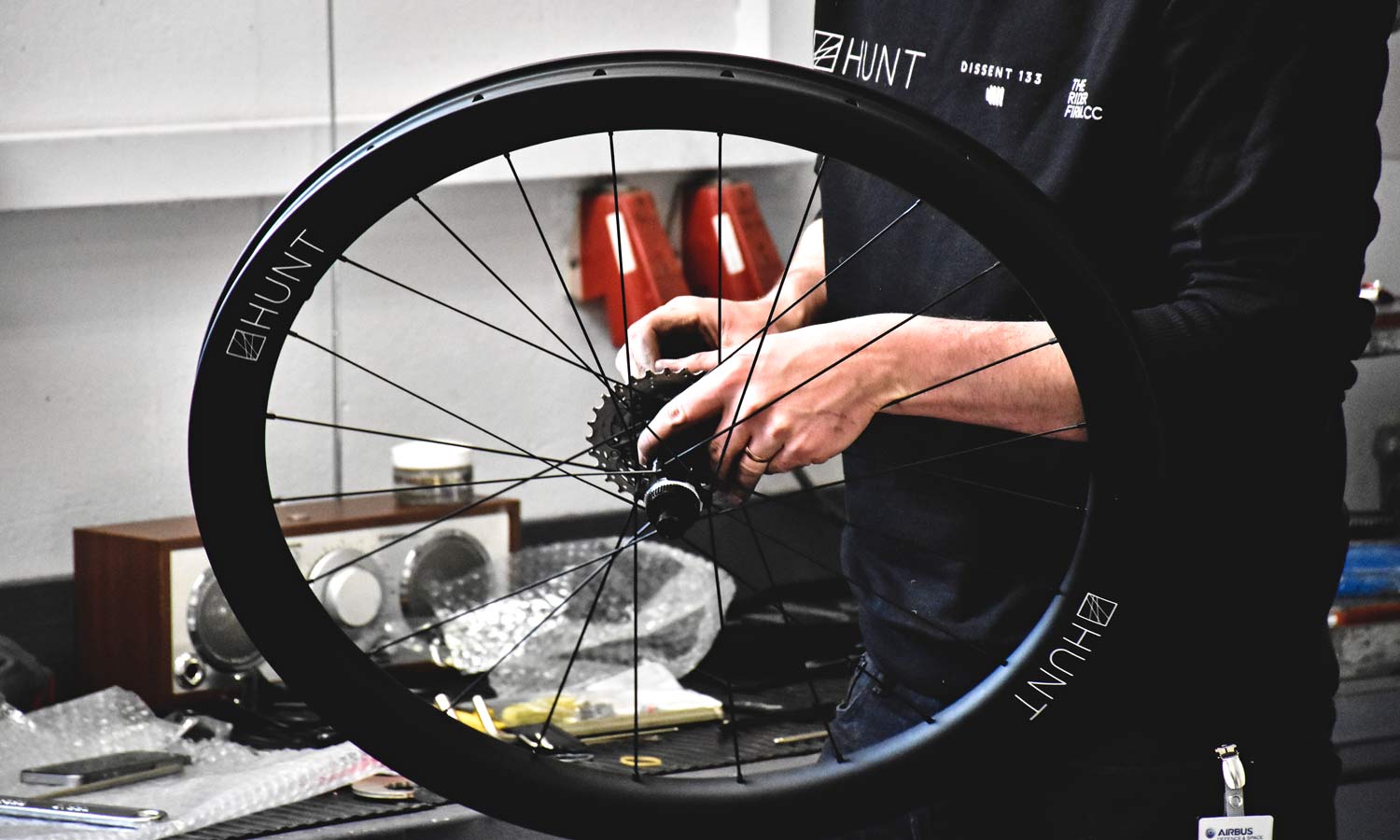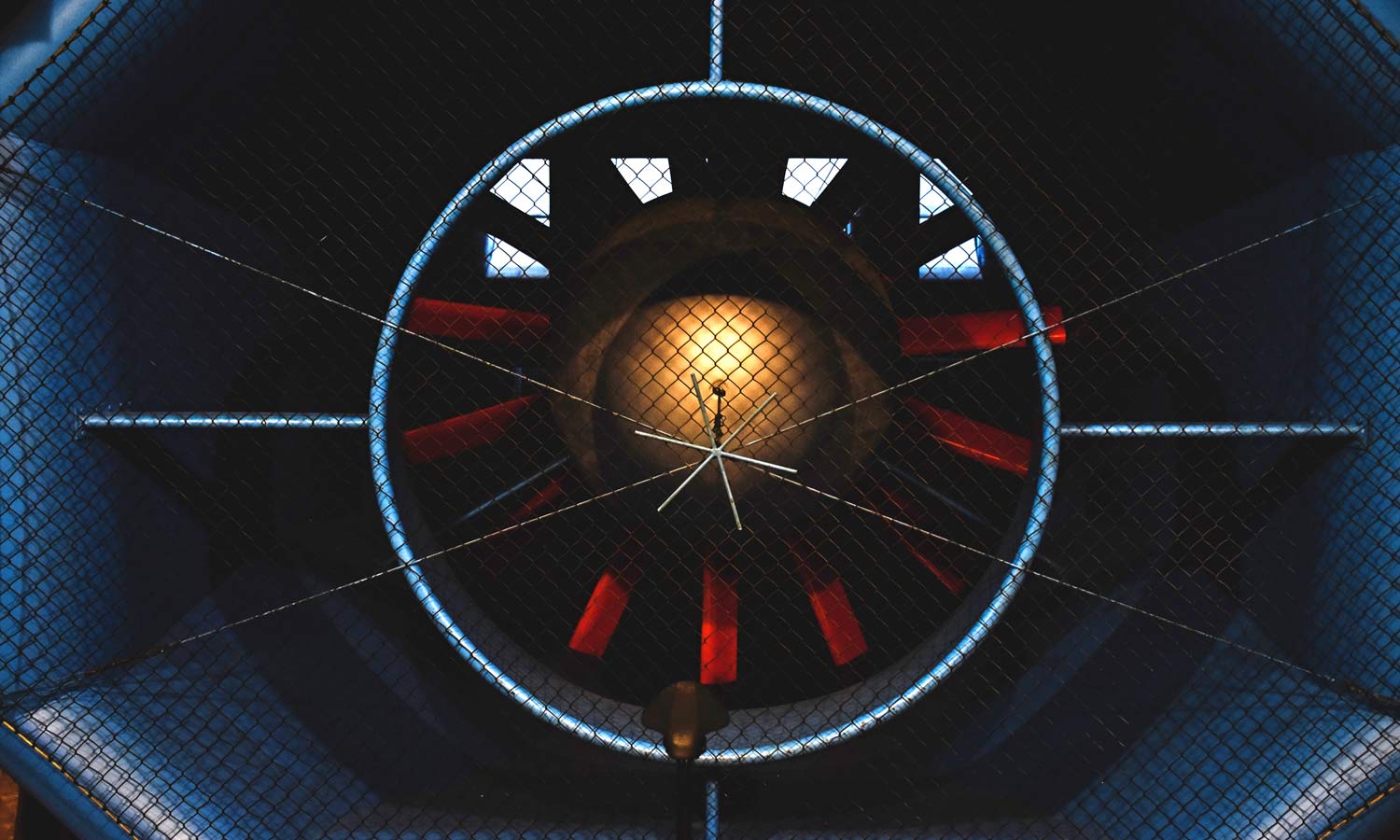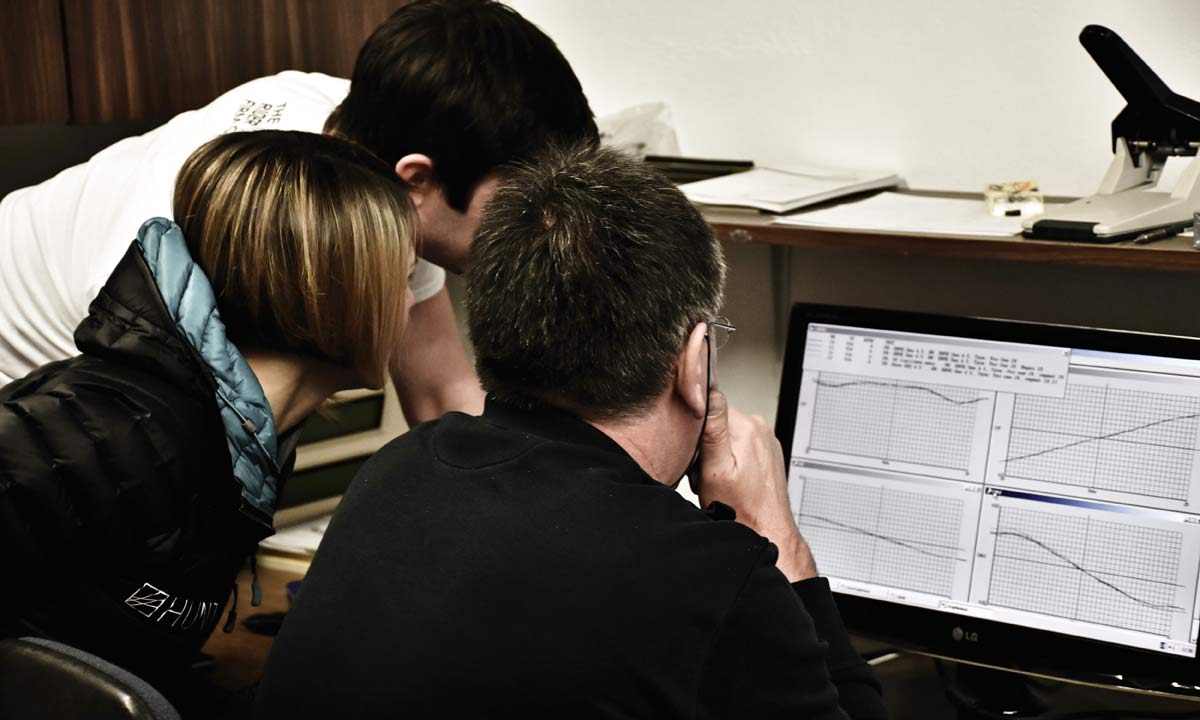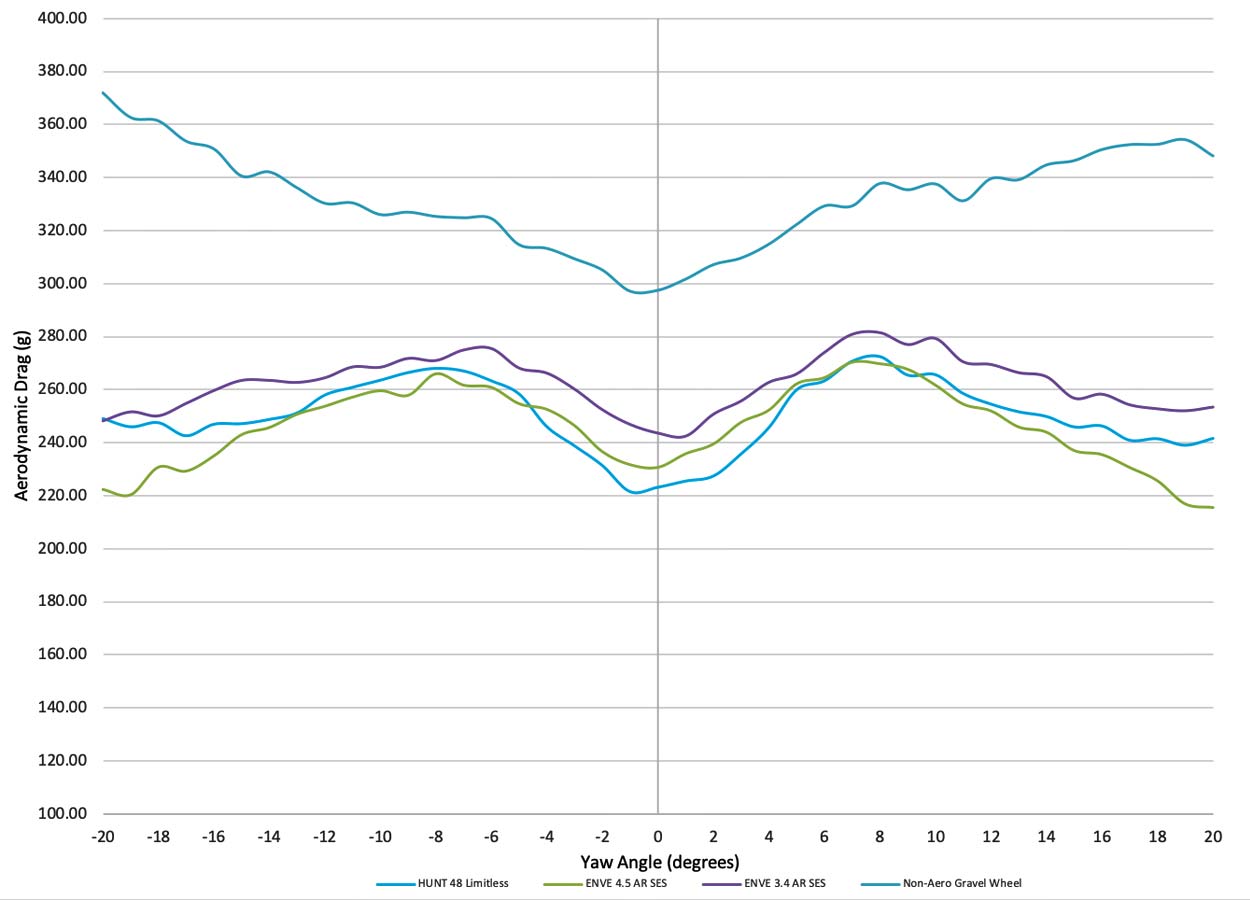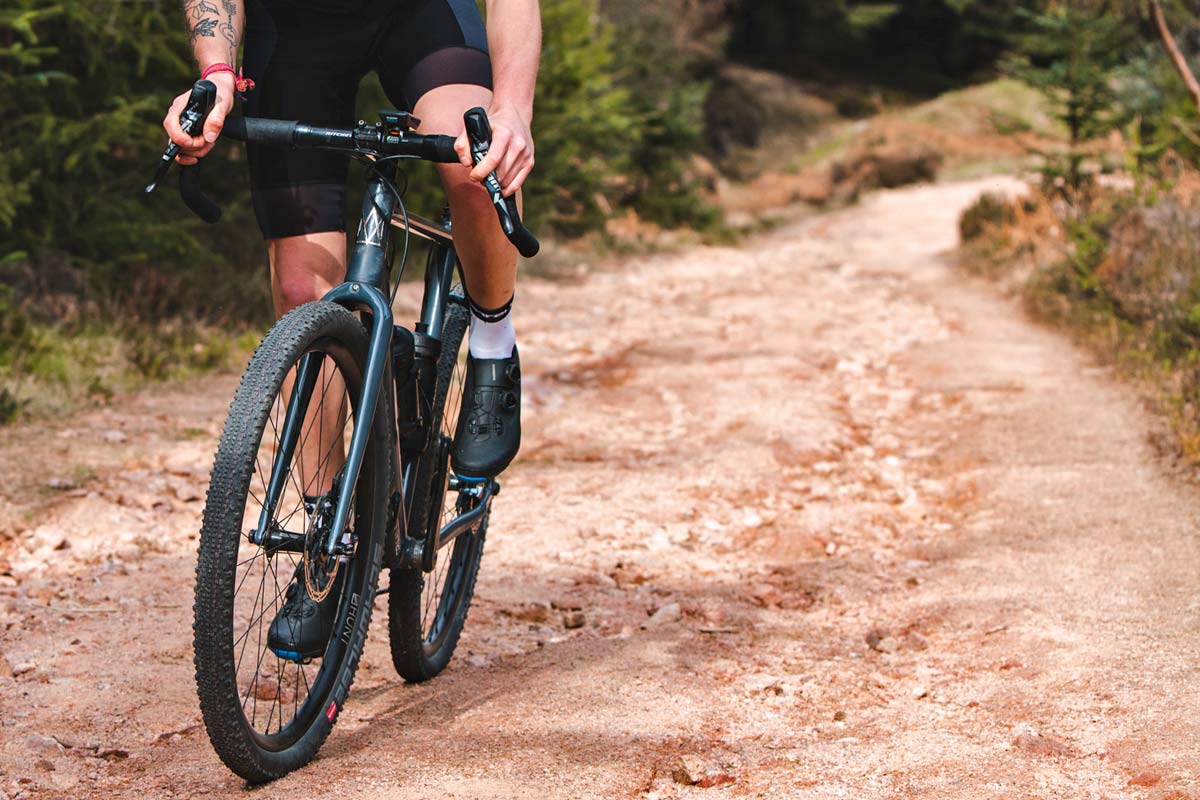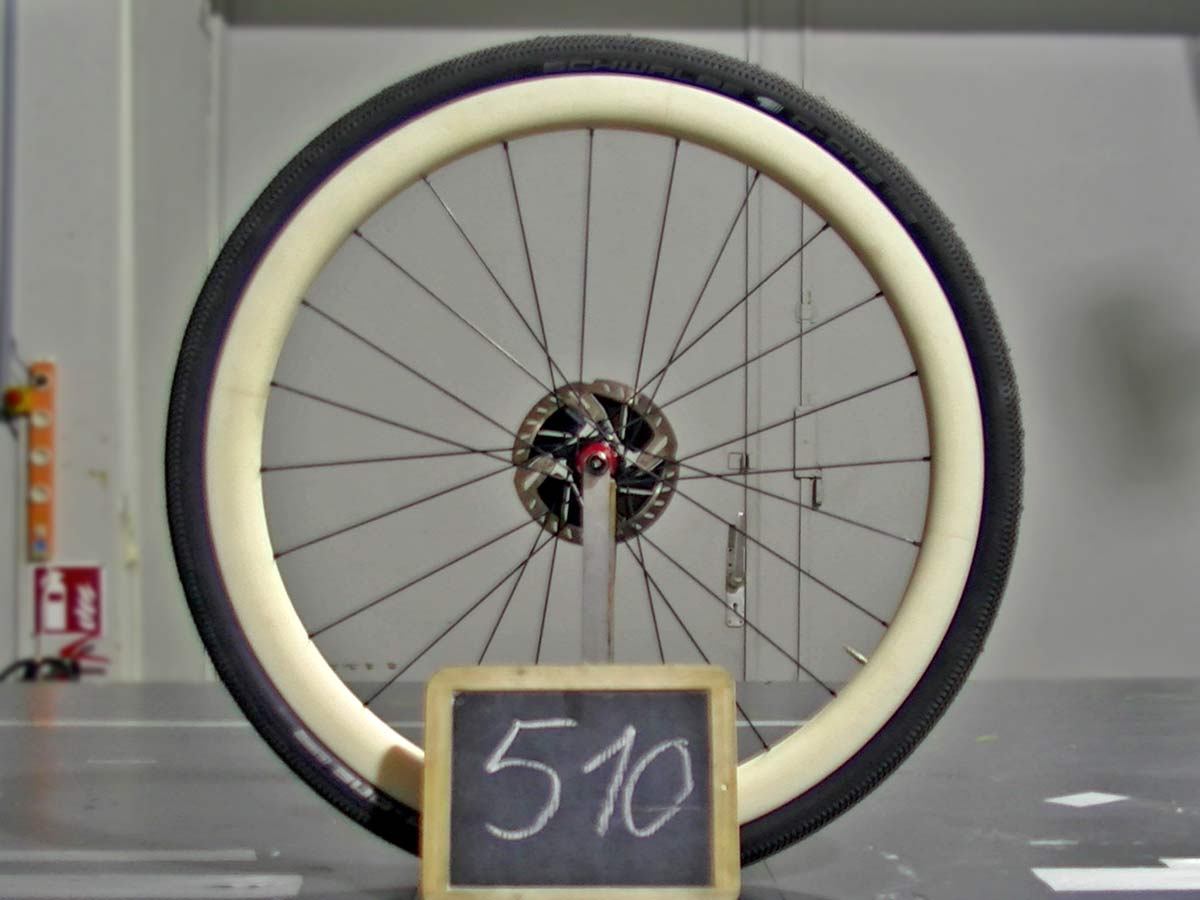Every wheelmaker after the next touts new aerodynamic claims for every different type of road bike. But taking that a bit off-road, are there actually any real aero gravel gains to be had in the fatter-tire, lower average speed world of gravel bike riding & racing? Hunt Bike Wheels was one of the first to quantify more likely real-world aero gains with the wider 28mm tires many roadies ride (and race) these days in their Limitless ‘fastest road wheel‘ project. But could those same lessons make drag saving gains with wider gravel tires too?
Do aero gains make a difference with fat tires on gravel roads?
A few weeks back, Hunt sent us their latest engineering research White Paper, where they tried to settle the score on whether aerodynamics really makes any difference for gravel bike wheel design. I’d lead this with the first caveat that: so far, Hunt doesn’t yet make an aero gravel wheelset, so this isn’t really directly trying to sell you a new set of wheels. (With that said, scroll down to the end and you will find a sneak peek at an in-development prototype.)
Hunt isn’t the first to bring up the combine topic of aerodynamics and gravel. Id’ venture to say that the 3T Exploro was the first to seriously pop up on my radar back in 2018, after they put their Sqaero tubing & 3D-printed mud into the wind tunnel.
But ever since aerodynamics engineer Luisa Grappone joined the Hunt team, they’ve taken a deeper look into aero gains, and spent more time in the GST wind tunnel. And unlike many companies that keep tight reins over their aero work, Hunt recognizes that they are a relatively small and young wheel company, and is trying to be as open as possible about how aerodynamic study influences their product design & development…
Gravel: Does Aero Matter? – a Hunt engineering analysis
So why did Hunt take gravel into the wind tunnel? Here’s how Hunt’s head of communications put it… “As riders & racers of gravel, we’ve increasingly been discussing (and asked by our customers) whether or not aero is particularly relevant within the discipline. Working with Ernst at the GST wind tunnel and doing lots of number crunching, we wanted to find out if gravel speeds and wide tyres [sic] negated aero considerations.”
They essentially went into the analysis expecting the wider gravel tires to break up airflow so much over a narrower rim, that any end aero benefit would be lost. But with so many iconic ‘gravel’ races from Dirty Reiver to Dirty Kanza, ultra-endurance races from Tour Divide to Atlas Mountain Race, and professional roadies crossing over to gravel racing, it was worth taking a closer look. Plus, there’s just more of us regular recreational cyclists picking new gravel bikes for their versatility.
So, what do the numbers say?
Yes. The simple answer is that Hunt’s real-world research and wind tunnel testing say that yes, for gravel, aero really does matter. The full Hunt research white paper (which you can see here) breaks down their assumptions, testing methodology, calculations, results & analysis.
But suffice it to say, comparing 38mm gravel tires set up on wide/deep aero wheels like their own 48 Limitless and ENVE SES AR wheels vs. conventional non-aero (their own 29mm wide external, 19mm deep alloy 4 Season Gravel X-Wide wheels, the reduction in drag across all yaw angles was significant – up to 9W saved.
In essence, if you took the 10 hours that Colin Strickland needed to win last year’s 201mi (321km) Dirty Kanza at an average speed of 20mph (32kph), the ENVE SES 4.5 AR wheels with 38mm Schwalbe G-One tires would have been fastest. Hunt’s 48 Limitless wheels would have been a mere 4 seconds behind, the shallower ENVE SES 3.4 AR another minute and 14 seconds back. And the shallow alloy 4 Season Gravel X-Wide wheels would have made the rider almost 7 minutes slower.
The differences aren’t huge, but they are real. And in a race situation it could make things close. Second place finisher Peter Stetina was just 9 minutes behind Strickland after more than ten hours of racing. With increased cross winds, the differences would be even greater.
So do you need to go buy some aero gravel wheels right now? Probably not, unless you are about to race some really long gravel. But if you do race gravel or ultra-endurance events, it is probably worth keeping the idea of aero gravel in the back of your mind from now on.
Sneak Peek: Next gen Hunt Carbon Aero Gravel Disc wheels
So when is Hunt going to introduce an aero gravel wheelset based on these wind tunnel findings? Not surprisingly, they wouldn’t put a date on their development timetable. Yet, they all but confirmed that a next gen Hunt Carbon Aero Gravel Disc wheelset was in the works, and coming relatively soon. We expect it will probably get the Aerodynamicist moniker like the rest of their latest wind tunnel tested wheels, and probably will sell for 1000-1200€ for a set. We’ll be curious how it stands up to the 48 Limitless and those ENVE SES AR wheels when fitted with fat gravel rubber…

